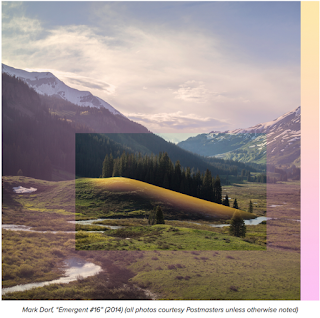In Conversation with Dakota Jackson
Oct. 8, 5:30-6:30 p.m.
Join a public dialogue between celebrated designer Dakota Jackson and Storm Janse van Rensburg, SCAD head curator of exhibitions. The event celebrates the opening of Jackson’s first retrospective exhibition, “The Making of Dakota Jackson,” at the SCAD Museum of Art. The evening provides a unique opportunity to learn about Jackson’s career through anecdotes and his insights into the relevance of design in contemporary times.
Free for museum members and SCAD students, faculty and staff with a SCAD Card.
 |
| Dakota Jackson, "Ke-Zu Chaise," designed 1988; manufactured 1989, laminated wood, steel and leather. Courtesy of Dakota Jackson. |
Join us for a reception celebrating "The Making of Dakota Jackson," the first major museum exhibition and retrospective of furniture designer Dakota Jackson. The exhibition explores the life and career of the visionary American designer and includes iconic works from his oeuvre, taking viewers from his first New York City design studio established in 1974 to the present.
Jackson's trajectory as a leading furniture designer began in the bohemian art scene of the late 1960s and '70s in downtown New York. He entered the creative sphere as a professional magician, a family trade he learned from his father. From there, his collaborations as a dancer and performer led to an interest in making furniture. One of his early commissions came from Yoko Ono in 1974: a desk as a gift to her husband, John Lennon, for his 34th birthday. Jackson was asked by Ono to create some of the unique features of the desk — an intricate piece of furniture drawing on the designer's fascination with illusion — such as the hidden compartments similar to those of an old Japanese magic box.
As Jackson expanded his practice, his focus shifted toward creating sleeker, more industrial-inspired objects. The series "Deadly Weapons" includes furniture designed and produced as one-of-a-kind works that could be described as functional sculptures. In the late 1970s, he moved his design practice into larger facilities and began using production line manufacturing, increasing the number and reach of his furniture pieces. His seminal pieces epitomizing this philosophy, "Vik-ter Chair" (1991) and "Library Chair" (1991), are included in the exhibition.
Music, movement and choreography remain important aspects of Jackson's design work. His longtime collaborations with Steinway & Sons led to the commission of two limited-edition pianos and the "TriCentennial Commemorative Piano I" (2000) also featured in the exhibition. Various photographic records, drawings and archival material included in the show will provide in-depth insight into Jackson's process, design philosophy and creative influences.
In 2013 SCAD recognized Jackson for his contribution to the American design lexicon through an invitation to be the university's honorary chair of furniture design. SCAD head curator of exhibitions Storm Janse van Rensburg states that "the multiple unique influences that shape Jackson's work have given form to objects that meld the artisanal with the conceptual, whilst remaining true to principles of exquisite design and practicality. The exhibition provides an opportunity to SCAD Museum of Art visitors and SCAD students to engage with the practice of a leading contemporary American designer whose oeuvre is rooted in existential questions of our time."
Opening Receptions from 6:30-8:30
 |
| Manjunath Kamath, "Second Hand Car Goes to Heaven,” 2009, automotive paint on fiberglass, variable size. Courtesy of the artist and Gallery Espace, New Delhi, India. |
Reception for Manjunath Kamath exhibition: 'As Far as I Know'
Join us for a reception celebrating, “As Far as I Know,” the first museum exhibition in the U.S. by Manjunath Kamath. Based in New Delhi, India, Kamath subversively brings traditional idioms into the contemporary realm with a satirical, self-deprecating wit. Partly derived from miniature painting and other narrative forms and traditions, his work ironically layers personal stories and memories with political and religious references.
Kamath packs fantastical details in his visually arresting compositions, where the borders between the ordinary and the extraordinary, fantasy and lived experience are blurred. He also comments on mass consumer culture with his installation titled, “Second Hand Car Goes to Heaven,” and draws viewers into his idiosyncratic world with large-scale paintings and a series of miniature watercolors.
 |
| Shin il Kim, “Active Anesthesia — The Full of Square,” 2007. Video projector, DVD player, rear projection screen, aluminum structure. 60 minutes, looping. Courtesy of the artist and Gallery Simon in Seoul. |
John us for a reception celebrating “Active Anesthesia,” an exhibition featuring three seminal works by Seoul-based conceptual artist Shin il Kim.
Through an experimental approach using drawing, sculpture, video and sound, Kim creates sculptural installations that alter meaning through a shift in perception. In doing so, the artist seeks to shake viewers out of a passive, anesthetized state into one that inspires active engagement with their surroundings. Kim explains, “Sometimes ordinary acts of everyday life can acquire a different meaning through a new perception or relationship. This is what my works try to capture.” An example of this transformation may be seen in the sculptural light installation, “Active Anesthesia.” Commonplace American television commercials are projected onto one surface of the piece, while the light from the television is transformed via the aluminum grid into an interplay of abstracted light on the other side of the installation. Kim brilliantly converts the mundane “anesthetized” images of television into a dynamic, minimalist composition of light and movement.
The light installation, “Temporal Continuum Intuitively Known Élan vital Operates Emptiness,” which is Kim’s musing on the limitations of language to refer to things and emotions, can also be seen in the exhibition with the video “Persistency.”
Shin il Kim was honored last year with the Korea Artist Prize 2014 and an exhibition at the National Museum of Modern and Contemporary Art in Gwacheon, Korea. This is the artist’s second solo exhibition with SCAD.












































